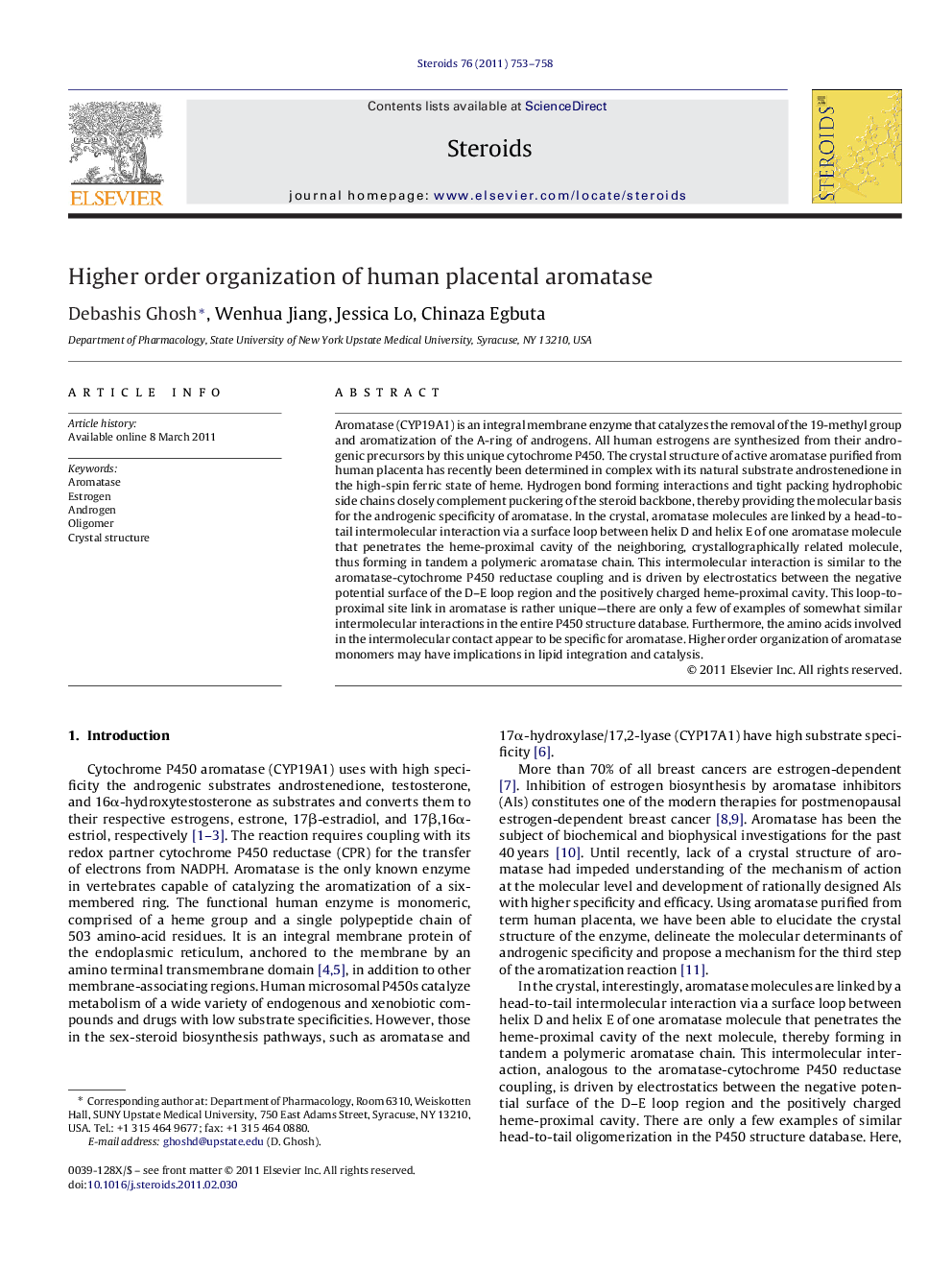| Article ID | Journal | Published Year | Pages | File Type |
|---|---|---|---|---|
| 2028593 | Steroids | 2011 | 6 Pages |
Aromatase (CYP19A1) is an integral membrane enzyme that catalyzes the removal of the 19-methyl group and aromatization of the A-ring of androgens. All human estrogens are synthesized from their androgenic precursors by this unique cytochrome P450. The crystal structure of active aromatase purified from human placenta has recently been determined in complex with its natural substrate androstenedione in the high-spin ferric state of heme. Hydrogen bond forming interactions and tight packing hydrophobic side chains closely complement puckering of the steroid backbone, thereby providing the molecular basis for the androgenic specificity of aromatase. In the crystal, aromatase molecules are linked by a head-to-tail intermolecular interaction via a surface loop between helix D and helix E of one aromatase molecule that penetrates the heme-proximal cavity of the neighboring, crystallographically related molecule, thus forming in tandem a polymeric aromatase chain. This intermolecular interaction is similar to the aromatase-cytochrome P450 reductase coupling and is driven by electrostatics between the negative potential surface of the D–E loop region and the positively charged heme-proximal cavity. This loop-to-proximal site link in aromatase is rather unique—there are only a few of examples of somewhat similar intermolecular interactions in the entire P450 structure database. Furthermore, the amino acids involved in the intermolecular contact appear to be specific for aromatase. Higher order organization of aromatase monomers may have implications in lipid integration and catalysis.
► Aromatase molecules in the crystal form head-to-tail oligomers. ► The D–E loop of a monomer penetrates the proximal cavity of the neighboring molecule. ► The intermolecular interaction is driven by electrostatics. ► This loop-to-proximal site link in aromatase is rather unique in P450s. ► Oligomer formation may have implications in lipid integration and catalysis.
